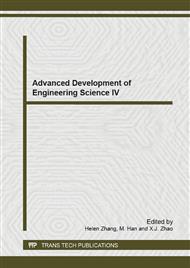p.191
p.196
p.200
p.205
p.209
p.215
p.219
p.223
p.227
The Structure Design and Numerical Simulation of Internal Flow Field with High Efficiency Low Resistance Cyclone
Abstract:
Introduces the structure and main characteristics of high efficiency low resistance cyclone dust removal, the use of fluid finite element analysis software for the internal flow field is simulated. It can be concluded that gas flow in the cyclone separator, pressure field, velocity field, such as distribution, and on the basis of the flow field calculation results for the structure design about analyzed and discussed.
Info:
Periodical:
Pages:
209-212
Citation:
Online since:
October 2014
Authors:
Price:
Сopyright:
© 2014 Trans Tech Publications Ltd. All Rights Reserved
Share:
Citation:


